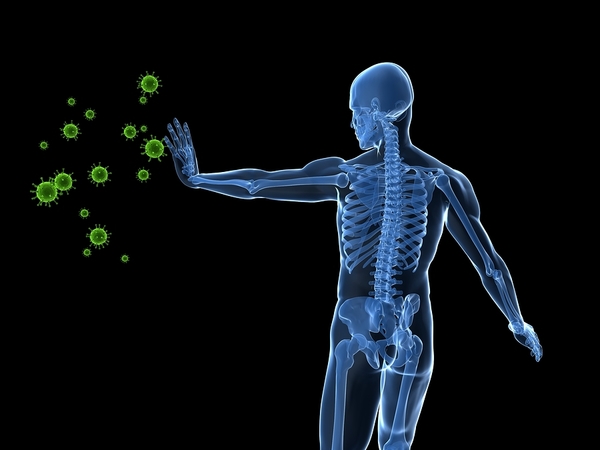Archive for April 2016
Thoracic Range of Motion
Check yourself right now: are your shoulders slumped forward or rounded? This is a good indicator that you may have poor thoracic mobility. Because there is a dearth of awareness among the general populous regarding proper spine mechanics, serious shoulder slumping has become a pervasive trend of the 21st century. At Family Chiropractic & Spinal Health Care Center, we want you to be aware of your thoracic spine and exculpate it from immobility to the benefit of your entire body.
The spine is not one long bone and, as such, it does not function as one.
Each region of the spine has a different set of characteristics that determine its function and range of motion. For example, the lumbar spine is built for stability and a reasonable range of motion. Why then, do we use the lumbar to perform all the functions of the thoracic vertebrae?
Misusing the thoracic vertebrae leads to a greater burden of responsibility placed on the lumbar region, as it attempts to take over the work that was meant for the thoracic vertebrae. As a result, the injured party usually ends up being the lumbar, and we never associate the problem with the thoracic spine, even as our kyphosis (convex curvature of the thoracic region) bows further forward.
Improving your thoracic mobility is a secret to your overall mobile longevity.
Here are a few of the benefits:
- Increased range of motion
- Improved spinal mechanics
- Better shoulder mechanics, leaving rotator cuffs less vulnerable to injury
- Greater lung capacity.
The thoracic spine is not meant to be immobile! To retain a pain free lifestyle throughout your entire life, call our offices in New Jersey: in Ramsey at (201) 995-9900 and in Passaic at (973) 471-9585.
Dr. Moe Abtahi, D.C.
Cervical Range of Motion
When you break down the daily burden born by the neck, you may come to appreciate its unsung role in your life. Seven vertebrae are responsible for supporting the weight of your head and allowing it to move around.
For athletes engaged in sport, there is no shortage of value for a cervical region in pristine condition: swimmers need a nimble neck to breathe, football players to avoid tackles, and soccer players to pick out the penultimate pass.
Imagine a neck that bore the weight of the head but allowed you no movement: you would only be able to face straight forward, moving your entire body to look to the side or down. Besides our survival chances being considerably weakened, most daily tasks that we take for granted would become an enormous inconvenience. This is why maintaining the range of motion in the cervical region is of paramount importance.
Because of their location at the crux of the head, no other region of the spine is more vulnerable to injury. There are myriad agents, both within your control and without, conspiring to limit your cervical range of motion. As an athlete, many neck injuries result from direct trauma such as a tackle that leaves the muscles damaged and vertebrae out of alignment. Similar to whiplash from a car accident, a tackle that jars the neck results in muscle pain and stiffness. Poor posture during training can contribute to misbalanced muscles, creating stiffness and pain.
Chiropractic adjustments are important for maintaining cervical range of motion. At Family Chiropractic & Spinal Health Care Center, we provide an adjunct for athletic endeavor that allows you to perform to your very best.
Call our offices in New Jersey: in Ramsey at (201) 995-9900 and in Passaic at (973) 471-9585.
Dr. Moe Abtahi, D.C
Runner’s Health
As you run across town and country, we urge you to not let your posture fall by the wayside. We are going to take a look at the runner’s perfect form, in hopes that you will keep these tips in mind to minimize the damage to spinal joints and enjoy maximum benefit from your exercise:
Stay upright!
Let your head take the lead. Your head is the main determinant in your overall posture. Facing forward will encourage your head to stay centered above the spine, keeping its weight properly balanced as you run.
With the head faced forward, the rest of the body will follow. The neck and spine will naturally remain in a straight, neutral posture. Keep your shoulders loose and do not let them creep up toward your ears; if you catch your shoulders creeping, take a deep breath and shake out the tension. As you run further, fight the urge to tilt the head forward or down towards the feet, as pretty as they may be.
Hips are your center of gravity. With an upright spine, the torso and hips should naturally face forward. Staying upright prevents your pelvis from tilting forward, which can cause lower back pain.
For all of its advantages (and there are many), running is very traumatic to joints in the legs and back. Your body has built in shock absorbers that are made to withstand a reasonable amount of trauma, but running daily on concrete is not conducive to a healthy back.
If your back is aching after a run, do not ignore your body’s warning sign. Running further without addressing the problem will simply compound the injury. At Family Chiropractic & Spinal Health Care Center, we offer treatment modalities that can correct the damage.
Call our offices in New Jersey: in Ramsey at (201) 995-9900 and in Passaic at (973) 471-9585.
Dr. Moe Abtahi, D.C.
Driving Posture
Picture the posture you hold while driving: can you even see it in your mind? Postural considerations in the car generally begin and end with two criteria: reaching the pedals and steering wheel comfortably. Secondary considerations include looking cool (leaning to one side, with one hand on top of the wheel), and being comfortable (slouching low in the seat).
Because sitting in the car is seen as a temporary activity, people rarely give credence to how their posture in the car could damage the spine. Yes it is true: the safest and most healthy driving position is not the most comfortable, especially for long rides. But if you can train your body to appreciate the benefits of good posture in your car, it will save you a lot of trouble down the road.
To be clear, I am advocating against looking too cool in the car: when you are leaning to one side, with one hand on top of the wheel, you are putting excess strain on the shoulders and shortening certain muscles in the back.
Not everyone has an adjustable steering wheel or the option of enhanced lumbar support in their car seat, although there are ergonomic back and seat rests that can positively influence your posture. In the meantime, keep the following techniques in mind and try to remind yourself of them as often as possible, to minimize the damage that could be accruing:
- Always sit up straight against the back of the seat.
- Try to keep your hips square, so that the pelvis is not twisted to one side.
- Chin level, but head centered over the spine: sometimes it helps to let your head rest gently against the headrest.
- Feet firmly on the floor, when pressing the pedals, and hands grasping the steering wheel at 9 AND 3.
These are simple tips which fall in line with general seated posture. The only difference being that people’s instinct to fall out of good posture is a lot stronger in the car. If you would like help installing a system of healthy posture in all activities of your life, or repairing damage that may have already been done, call our offices in New Jersey: in Ramsey at (201) 995-9900 and in Passaic at (973) 471-9585.
Dr. Moe Abtahi, D.C
Sitting Posture
For millions of people in New Jersey alone, sitting constitutes a large portion of their daily positioning.
Sitting is perhaps the most conducive position to poor posture. The body’s natural instinct when it is sat in a chair is to sink into it, immediately creating muscular imbalance and poor curvature. When screens are introduced to the equation, especially when they are not adjusted to the proper height, we tend to lock into a head forward position which magnifies the weight of the head on the spine. Sitting regularly in this posture brings into play the possibility of significant strain and injury to the muscles of the head and neck.
Truly supporting your spine while sitting for extended periods of time requires a combination of factors including: proper posture, a good ergonomic set up and attention to movement/giving your body occasional breaks.
Posture:
- Head facing straight, centered over the spine, not lurching forward.
- Back straight, shoulders back and buttocks touching the back of the chair.
- Natural curve in the lower back
- Weight of torso distributed evenly on both hips.
- Legs at 90 degree (or ever so slightly higher) angle, supporting weight of torso without placing too much burden on the feet.
- Feet rested flat on the floor, but not pressing down.
Posture is the most immediate and effective way you can influence the health of your spine, especially if you are sitting all day long. It is a commitment to your health.
Call our offices in New Jersey: in Ramsey at (201) 995-9900 and in Passaic at (973) 471-9585.
Dr. Mohammed Abtahi, D.C
Posture Awareness
Posture goes beyond the way you position your body when sitting or standing: an activity performed with proper posture allows the body to utilize its total mechanical advantage, reducing the chance of injury. To this end, it also influences and creates the strains that you put on your body. At Family Chiropractic & Spinal Health Care Center, we want people to be aware of how posture and movement can underwrite a better life.
We are living in an era of human-screen interface in which both parties suffer degradation. The only difference being that, once your device reaches its life span, you can upgrade to the newer, better product. This is not the case with the human: 21st century habits are pushing forward the shelf lives of our spines, and there is no upgrade available. Saying, “I just can’t help it,” as you slouch on the couch, is a dangerous attitude: giving in to this mentality is setting yourself up for a future full of back pain. Poor posture is pervasive: it strains the muscles, joints and ligaments which are working to support our whole body. This can lead to a host of injuries including general back pain, herniated discs, sciatica and respiratory problems. Furthermore, poor posture reflects your mood and projects a diffident attitude.
There are many causes for poor posture: for most, it is reinforced as we let our bodies grow lazy. But for some, it can be caused by a debilitating spinal injury that prevents them from standing up straight without immense pain. Strength of the postural muscles, and spinal flexibility are important factors in good posture.
We want you to start standing and sitting well, stretching and sleeping productively, and listening to the warning signs of your body. If you need help installing good postural habits in your life, or addressing the muscular imbalances and pain that have left you with a stooped, unhealthy posture, call our offices in New Jersey: in Ramsey at (201) 995-9900 and in Passaic at (973) 471-9585.






